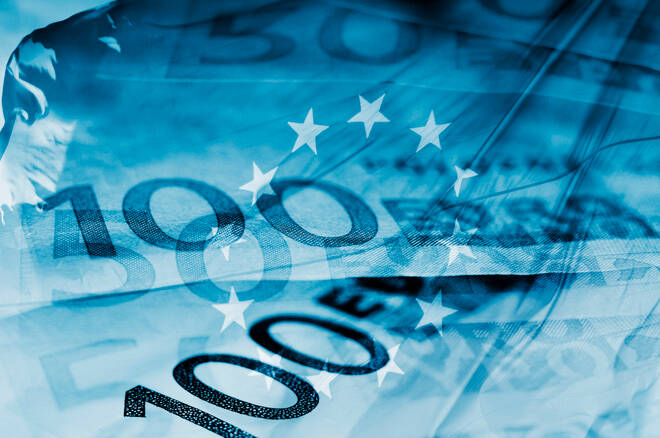Advertisement
Advertisement
The EU’s 750bn EUR Recovery Fund Proposal aims to Balance Loans, Grants and own Resources
Updated: Jun 1, 2020, 07:33 GMT+00:00
The European Commission (EC)’s ambitious proposal is a critical step in the right direction to contribute to an even and sustainable economic recovery across the EU-27. Still, major hurdles lie ahead, and various open questions remain.
Scope Ratings deputy head of public finance Alvise Lennkh takes stock of the proposal to create an EU recovery fund by answering three questions.
Do you expect the EU recovery fund to look like the EC’s proposal or be substantially watered down?
The EC’s proposal provides the starting point for intense negotiations over the coming months. Some aspects will certainly change while others still need to be agreed upon. The EC’s proposal of a 2/3 split of grants and 1/3 of loans of a total EUR 750bn fund volume carefully balances the Franco-German proposal, which included direct grants of EUR 500bn, and the strong preference of the ‘frugal four’ to rely on loans only.
The final share of funds between grants and loans is one of the main remaining areas of negotiation and could end with a somewhat higher share of loans than currently proposed. This will also depend on other characteristics of the fund, including its temporary nature, the eligibility criteria to access the fund as well as the purpose/projects for which the monies can ultimately be used.
We thus expect the final result to change somewhat. Still, the overall direction, including the proposal to use substantial grants as per the EC’s proposal, is likely to form part of the EU’s economic recovery strategy going forward.
What impact will the additional borrowing required by the recovery fund and SURE programs have on the European Union’s credit quality?
The EU’s rating is primarily driven by its highly rated key shareholders. In addition, the EU has a strong institutional setup ensuring de facto joint and several support, a legally enshrined debt service priority combined with significant budgetary flexibility as well as its conservative cash management resulting in very high liquidity buffers.
The impact of the additional borrowing will primarily affect the EU’s liquidity metrics, specifically its liquid assets ratio, depending on the amount of annual disbursements the EU conducts via the recovery fund and SURE. While more details are needed to assess the impact on the EU’s liquidity metrics, the EU’s AAA rating would be resilient to a significant increase in annual disbursements, assuming that the other parameters of the EU’s budget remain broadly the same, including cash buffers (which hover around EUR 20bn per year) and the budgetary margin (which refers to the resources the EU can draw from member states without requiring parliamentary approval).
Depending on the final parameters of the next multi-annual financial framework for 2021-27, including a possible increase in the EU’s own resources, these disbursements could be around EUR 100-150bn per year without necessarily risking the AAA status. This reflects Scope’s mandate-driven approach in assessing supranationals, which acknowledges that institutions like the EU have a mandate to act counter-cyclically, increasing activities precisely when their member states most need support.
What impact will these programmes have on the credit quality of the euro area periphery, particularly Italy?
The final impact will depend not only on the amounts transferred but also on their use.
Here, the eligibility criteria for the funds will be key. A productive use of such grants could help foster a quicker recovery and avoid further sharp rises in explicit public debt levels, thereby potentially reducing risks to sovereign ratings, especially for weaker member states.
For Italy, the key rating relevant aspect is whether the recovery fund could facilitate a faster economic recovery, by raising actual and potential growth, without further adversely impacting the country’s public finances through raising government borrowing.
In the case of grants of around EUR 82bn (4-5% of Italian GDP) as proposed by the EC, such disbursements would be spread across 2021-24, meaning support would be incremental, and the total economic impact would ultimately also depend on the growth multiplier. Even with the support of a recovery fund, Italy is, however, unlikely to reverse much of the severe increase in its debt stock of at least 20pp in 2020.
Still, recovery fund grants are credit-positive if financed projects support higher economic growth and/or if the government were to implement additional growth-friendly reforms induced by associated eligibility criteria to access the fund. The EC proposal emphasises the twin green and digital transitions as well as national investment and reform priorities to guide the allocation of funds.
Finally, in the case of Italy – as well as in other member states – challenges also relate to effectively implementing these projects given poor track records in fully utilising EU funds. Here, overcoming administrative inefficiencies to identify and co-fund EU projects will be an important hurdle to make the most of funds.
For a look at all of today’s economic events, check out our economic calendar.
Alvise Lennkh is the Deputy Head of Public Finance at Scope Ratings GmbH.
About the Author
Alvise Lennkh-Yunuscontributor
Alvise Lennkh-Yunus is Head of Scope’s Sovereign and Public Sector ratings team.
Advertisement
